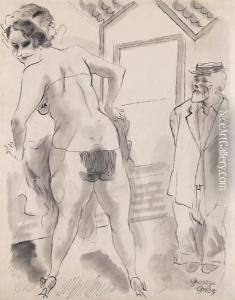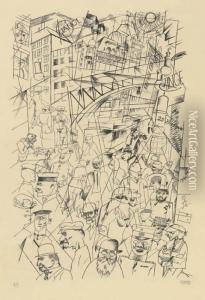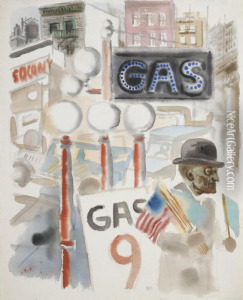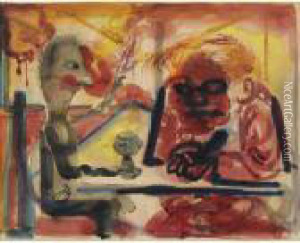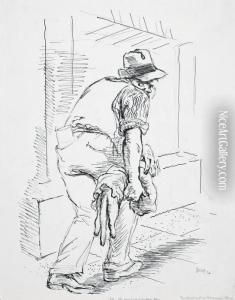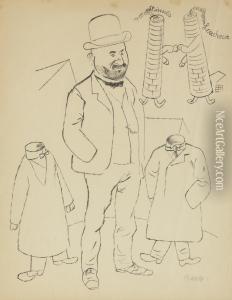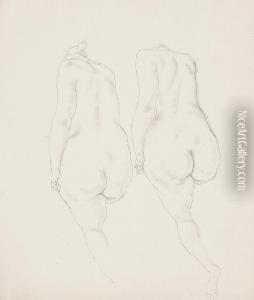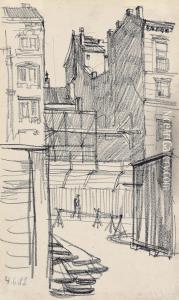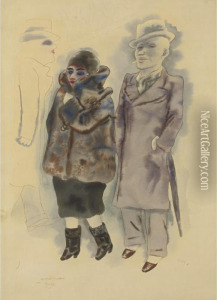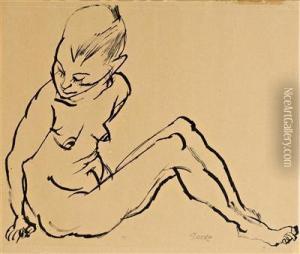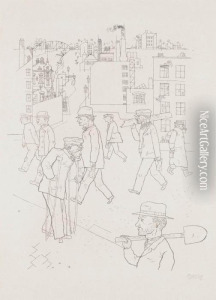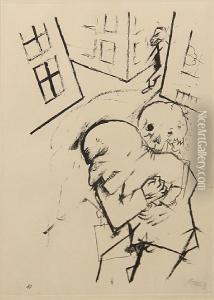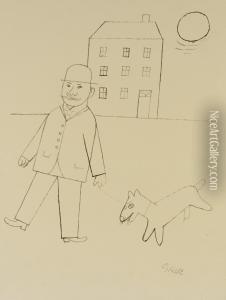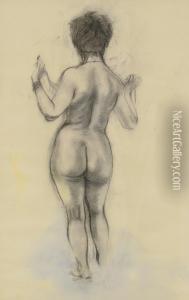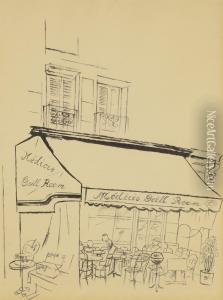George Grosz Paintings
George Grosz was a German artist known particularly for his caustic pen-and-ink caricatures and drawings, which critiqued the social and political conditions of Germany in the period following World War I. Born as Georg Ehrenfried Groß on July 26, 1893, in Berlin, Grosz grew up in a turbulent era that heavily influenced his artistic style and subjects.
In 1916, during World War I, Grosz was drafted into the German Army, but his service was cut short due to his health. The horrors of war and the social injustices he perceived influenced his work profoundly, leading him to become a prominent member of the Berlin Dada and New Objectivity movements, alongside artists like Otto Dix and Max Beckmann. Grosz's work from this period is characterized by sharp social satire; he depicted the corruption of German society, the brutality of the bourgeoisie, and the plight of the urban poor with a biting edge.
In 1932, anticipating the rise of Nazism and the threat it posed to his art and personal safety, Grosz emigrated to the United States. He settled in New York City where he continued to work as an artist and became a naturalized citizen in 1938. While in America, his work shifted focus somewhat, but he continued to produce critical and satirical art. He taught at the Art Students League of New York, where he influenced a new generation of artists.
Grosz's later work did not have the same impact as his earlier, more politically charged pieces, and he became somewhat disillusioned with the commercialism of the American art market. He briefly returned to Berlin in 1959, but died shortly after his arrival on July 6, 1959. Despite the changes in his artistic focus over the years, Grosz's legacy as a sharp critic of social injustice and as a pioneer of the Dada and New Objectivity movements remains significant.
